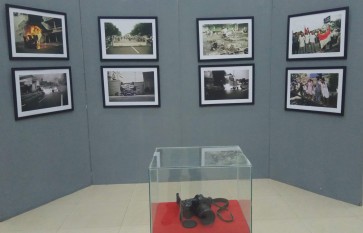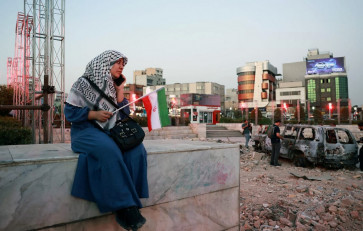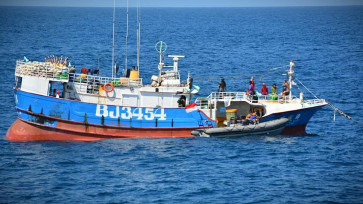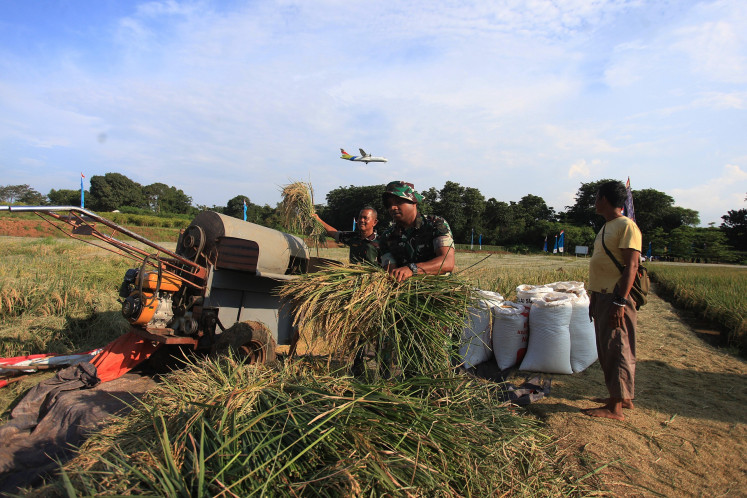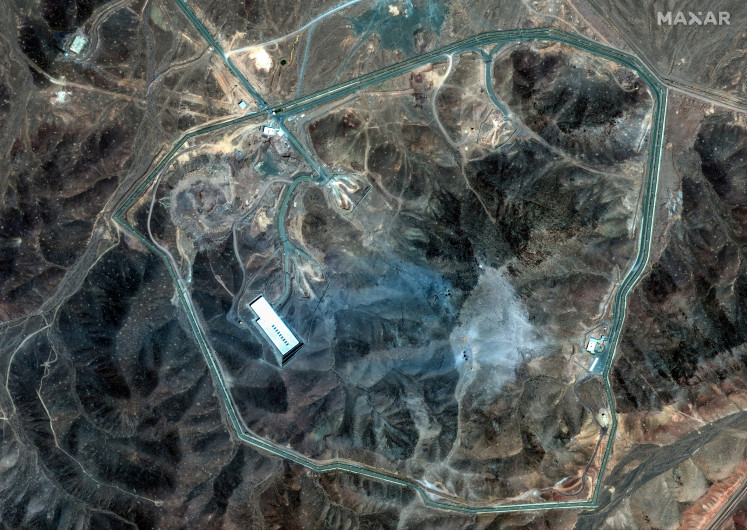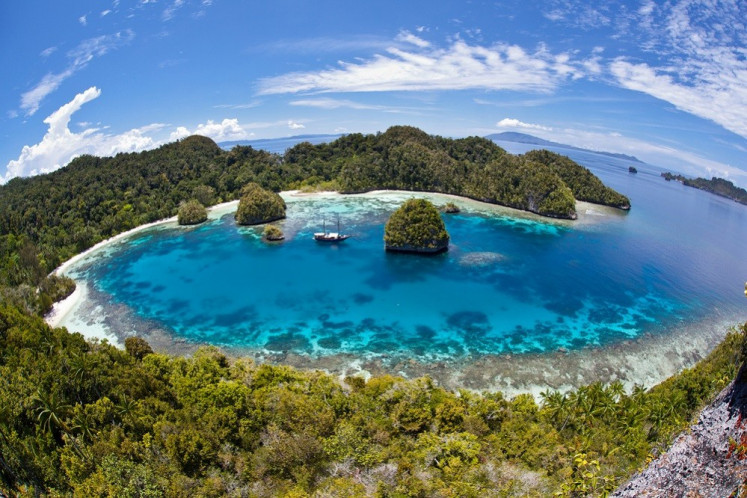Popular Reads
Top Results
Can't find what you're looking for?
View all search resultsPopular Reads
Top Results
Can't find what you're looking for?
View all search resultsIndonesian Icons: 'Kerokan' is here to stay
A traditional healing therapy for the common cold, kerokan remains popular despite lacking scientific evidence.
Change text size
Gift Premium Articles
to Anyone
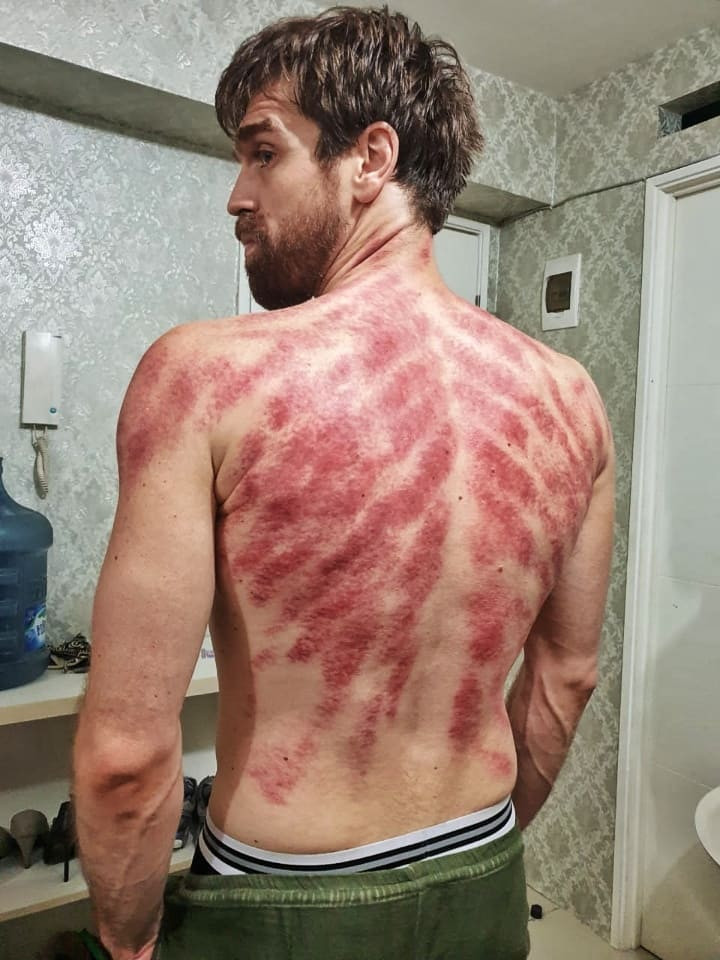
"Indonesian icons" is a series offering in-depth explorations of figures, elements and events that have defined the country, from noteworthy people and culinary delights to historic locales and unforgettable moments.
A traditional healing therapy for the common cold, kerokan remains popular despite lacking scientific evidence.
Thirty-four-year-old Joe Coffey first heard about kerokan – scraping the back with a coin (or other blunt instrument) after lubricating it with massage oil or balm – when the American lived in Thailand.
After moving to Indonesia in January last year, Coffey’s girlfriend Rusti Wigati, 29, who is originally from Jakarta, made him try kerokan for the first time.
When the masseuse came to Coffey’s place and spoke with Rusti in Indonesian, he did not realize they were talking about giving kerokan at the end of the massage – despite the “scraping tools” being ready alongside her massage equipment. As instructed, Coffey sat up – thinking he was about to get a regular shoulder rub after a one-hour full-body massage.
“I guess I agreed to it unintentionally, and before I knew what was happening, I was getting my first kerokan done,” said Coffey – who resides in Bali.
Coffey said that since he was from the United States, kerokan did not fit with any Western medical philosophy he had ever heard of. While he is open-minded to alternative medicine and treatment after experiencing Thai massage, he suspected kerokan might be based on ignorance and a belief in magic.
Coffey’s first experience with kerokan definitely changed his mind. For about 20 minutes, the masseuse scraped the tool over his whole back and neck. Coffey could hear both the masseuse and Rusti giggling, because “apparently it was working very well.”
“After it was done I felt very light, and my skin was sort of comfortably throbbing, which is not a painful sensation, but a very curious one,” he said.
Coffey added that he was very surprised by the sensation of kerokan – describing the pressure on his skin as being very different from what he was used to. His skin also went dark purple which, as many Indonesians believe, shows when kerokan is done properly.
“I would definitely recommend kerokan to anyone who has an experienced person offering it,” Coffey added.
Interviewed separately, Rusti, aka Kiki, said it was actually the masseuse’s idea to give Coffey kerokan after feeling “wind inside his body.”
“He [Coffey] feels better after getting kerokan. The power of coins!” Kiki remarked.
Myths
Indonesians commonly refer to kerokan as a traditional Javanese healing therapy to treat masuk angin (literally translating to "wind has entered the body") – which is practically a common cold. Kerokan can be traced back to China – where the technique is known as gua sha.
While neither kerokan nor masuk angin are backed scientifically and medically, the treatment has remained popular over decades.
Herry Wahyuni, 61, who first tried kerokan almost 40 years ago, explained that the treatment worked for her just fine. While she feels pain when the coin scrapes her skin, Herry says her body feels better after.
“If a doctor says [that kerokan does not work] that is because he or she has the education [to say so]. But kerokan is already a tradition and it makes us comfortable – plus it’s cheap with only a coin and minyak angin [warming oil],” the mother of two who lives in Jakarta said.
Similarly, Angela Daruki Nrangwesti, 45, who is also based in Jakarta, said she often gave kerokan treatment to her close friends and family members. She only uses a worn coin with smooth edges to ensure the pain is limited.
Angela acknowledged that kerokan might cause harm due to its scraping method. However, many Indonesians already believe the treatment works due to their mindset.
“People still do it because they believe it is an effective traditional therapy,” she said.
Safe?
The Jakarta Post reached out to several tukang urut (traditional masseuses) in the past week. One masseuse turned down the request for an interview after conceding that kerokan was not medically proven to be effective. The masseuse added that he would not want to be put in the spotlight as someone who “promotes” kerokan.
One tukang urut agreed to be interviewed anonymously and said there were people who should not receive kerokan as a treatment as it might harm them.
“People with medical conditions related to their skin or blood vessels should not get kerokan, as an example,” he told the Post.
He added that some people might bleed easily and thus kerokan was not recommended for them. Other people who have medical equipment implanted in their body – such as pacemakers – should avoid kerokan as well as people who have other infections.
“It is important to ask about the person's condition before performing kerokan,” he said.
Describing his own method of kerokan, the traditional masseuse said he always began by scraping the left side of the back with a slow and smooth movement with a coin or a tool and minyak angin. He then does the same thing on the right side.
“Pressure should be added to increase blood circulation. Never kerok [scrape] on bones – but between them,” he said, adding that he always prayed before giving kerokan for positive affirmations.
Separately, Dr. Priskila Kristiawan – a general practitioner – said many people had confidence in their recovery after receiving kerokan due to the warm sensation on their skin.
“[The warm sensation] comes from the scraping – just like in physics when two objects are rubbed against each other then heat will be produced. In kerokan, the two objects are the skin and the coin,” Dr. Priskila said.

Dr. Priskila further explained that the method of kerokan was first discovered in China around the fifth to seventh centuries before it was introduced to other countries such as Indonesia. She explained that, while kerokan was believed to smoothen blood circulation and heal the common cold, it could not be scientifically proven.
“Scraping the skin with an object with rough edges – such as a coin – in reality, causes skin inflammation. It causes the outer part of the skin to become open and damaged. This is what causes the skin to go red,” she said, adding that this condition might allow bacteria and viruses to enter the body.
Still, Dr. Priskila conceded that kerokan would not disappear over time due to tradition. She instead recommended people put cleanliness over anything whenever kerokan is being performed.
“If you want to do kerokan – it is better to use a clean scraping tool that has not already been used on other people,” she added.
Back to American Joe Coffey – he seems to enjoy kerokan now. Coffey and Kiki even perform kerokan on each other from time to time. While admitting that he gives Kiki kerokan way more than the other way around, Coffey said the traditional therapy had become a recurring theme in their relationship.
“Also, the marks look incredibly awesome, like an exotic red tattoo that fades after a day or two,” he said, adding that local people often smile and acknowledge any marks on his neck or shoulder every time they see it over his shirt.
For better or worse – it seems that kerokan is here to stay.

